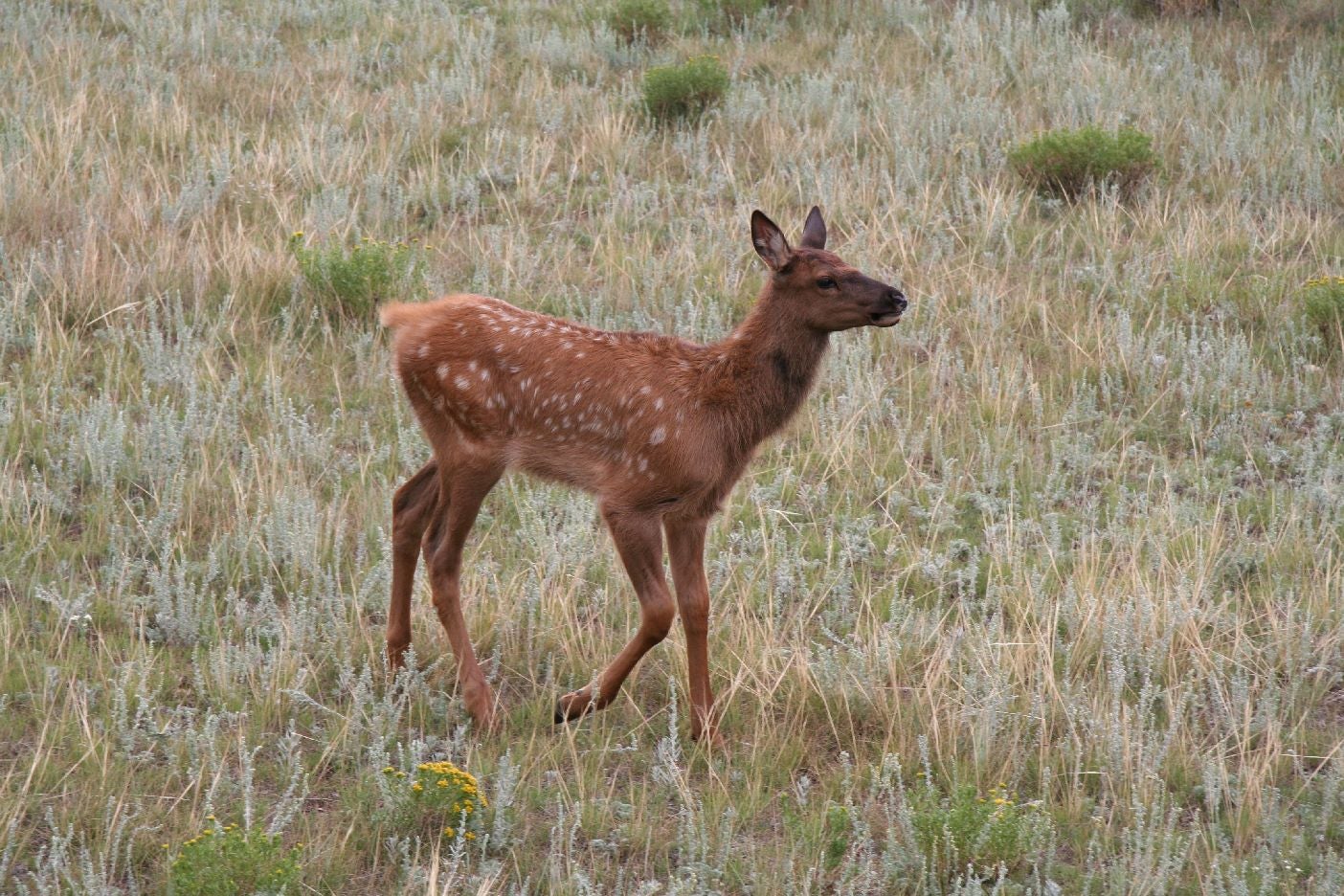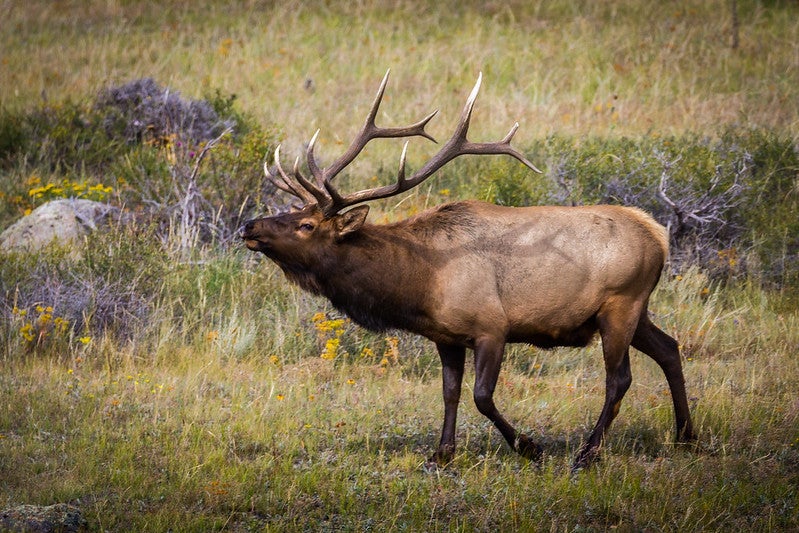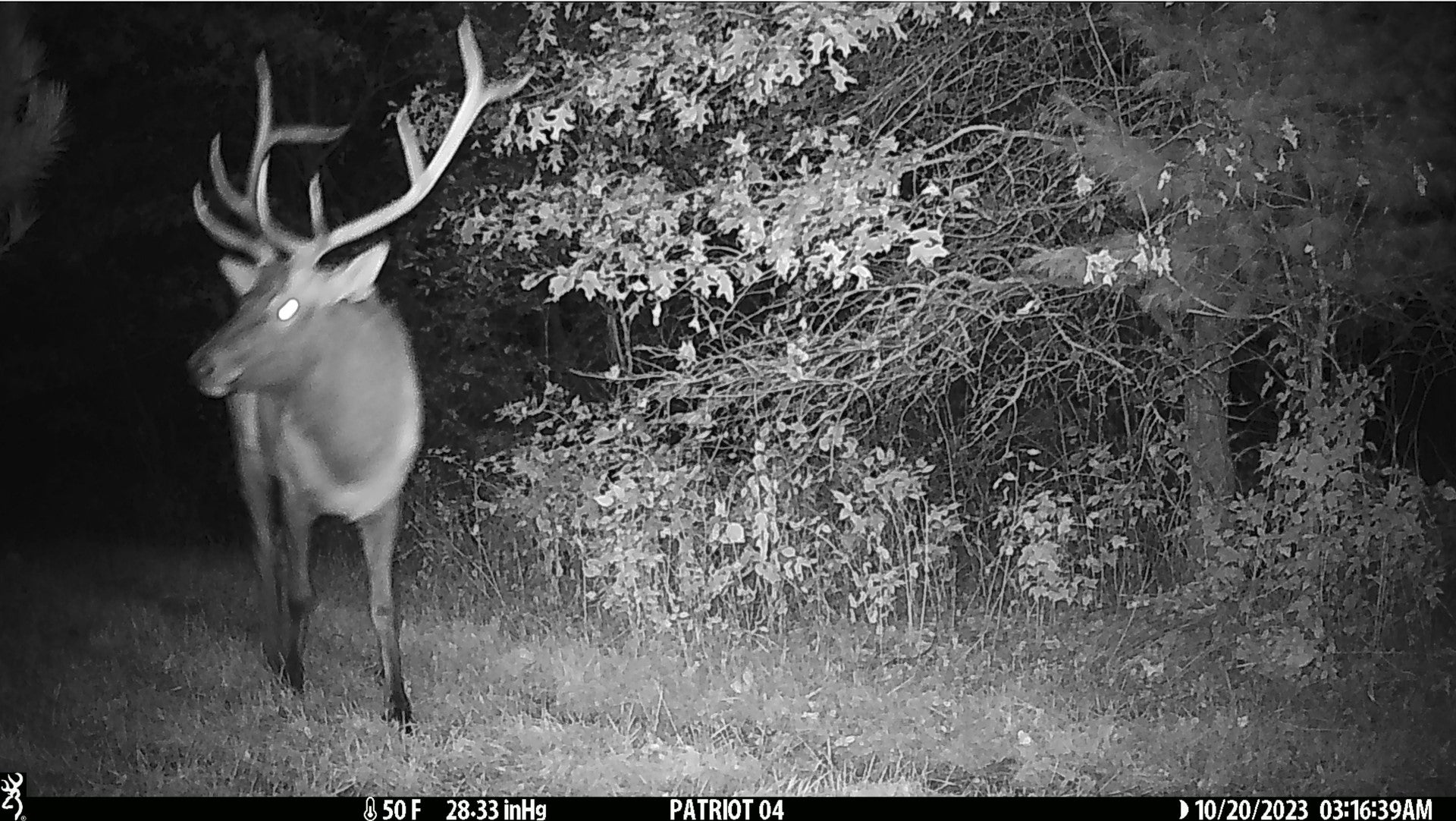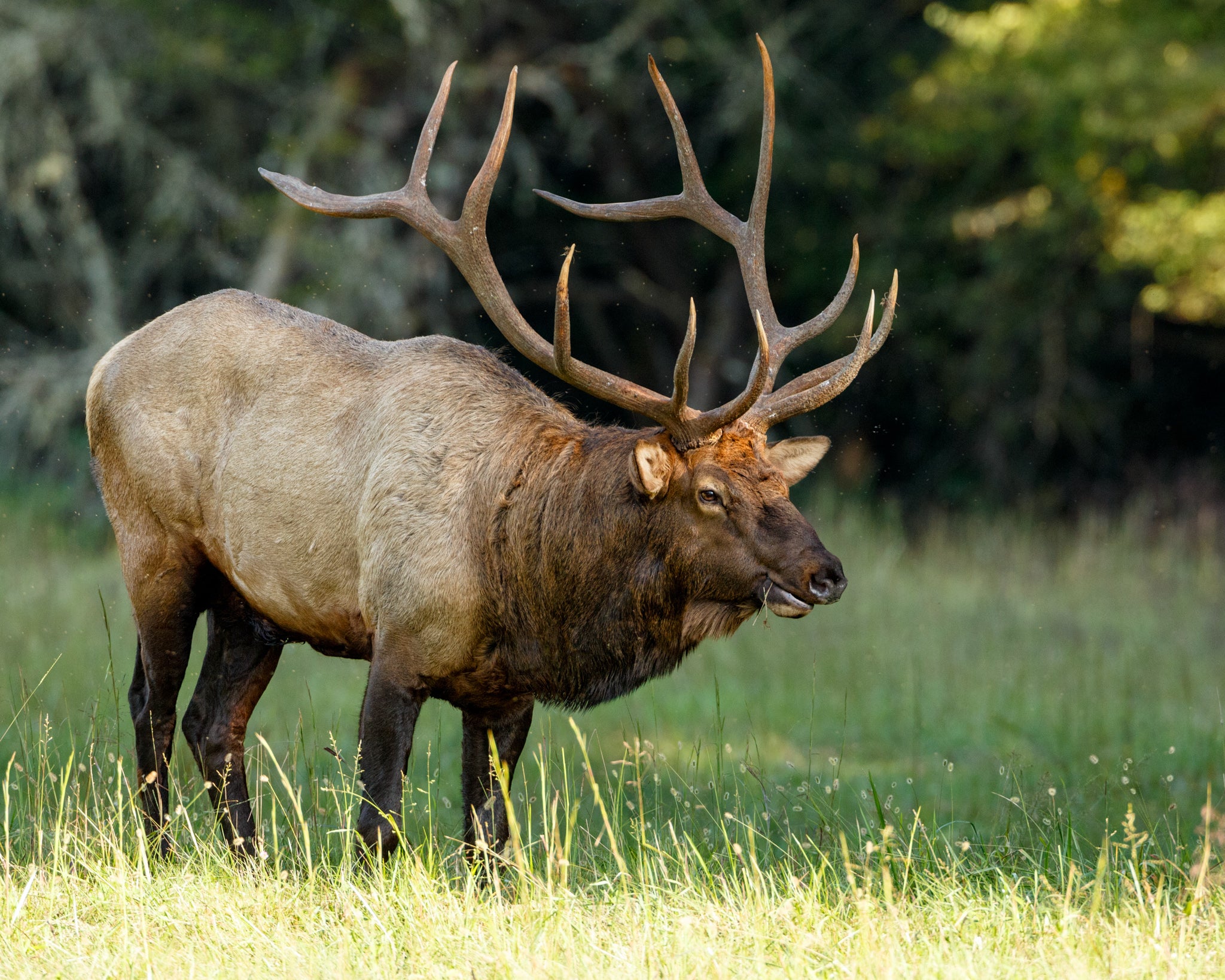It’s been an exceptional summer for the elk herd in the Clam Lake area of far northern Wisconsin, with 35 to 37 calves born.
Besides the bumper crop of newborns, Department of Natural Resources elk biologist Laine Stowell says the most encouraging thing is that for the first time in the 18 years since elk were re-introduced to the area from Michigan, more females were born than males. Stowell says even though the spring green-up was late, the cows weren’t stressed.
“We had good growth and warmer temperatures after green-up started,” says Stowell. “Even though we had lower than average birth weights, we’ve seen good survivorship of those calves – probably because mom, that pregnant cow or lactating cow had a lot of food available.”
Stay informed on the latest news
Sign up for WPR’s email newsletter.
Another significant point: So far, none of the calves have been killed by bears. Stowell says the mortality rate from bears can be as high as 25 percent, but he thinks the bear-hunting season is helping the elk herd.
Wolves are another concern. Stowell says they are most dangerous to young elk from January to mid-May.
“Those animals have a long ways to go before the next calving season starts and we’ll have additional losses but we’ve got a good start,” he says.
He says three wolves were killed in the Clam Lake area last year in the state’s first-ever wolf hunt, which may also help the herd grow. Stowell says he likes what he sees so far.
“The herd is growing, but some years it grows faster than others,” he says.
He thinks this will be one of those years. He says the herd numbers 185 now, compared to 162 last year. Stowell says a few more calving years like this one and the herd will grow significantly.
Plans are still on the drawing board to bring in more 275 elk from a donor state in 2015 to enhance this herd, and start another one in the Black River Falls area.
Wisconsin Public Radio, © Copyright 2024, Board of Regents of the University of Wisconsin System and Wisconsin Educational Communications Board.





